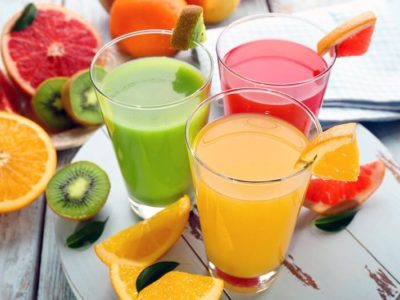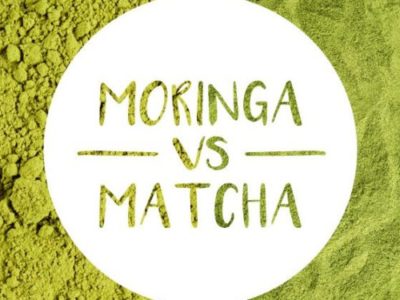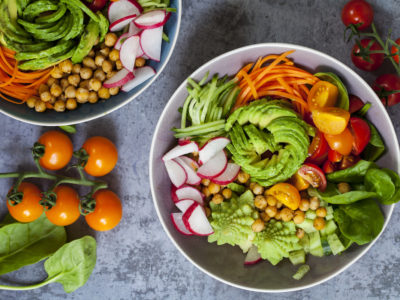Table of Contents[Hide][Show]
Oxalate Definition
Oxalate, also known as oxalic acid, is a substance our body produces when we digest or break down food. It’s also found in a lot of the plant- and animal-based foods we eat.
The main function of oxalate is to bind minerals and form them into different compounds. This process often takes place in the colon, kidney, or urinary tract.
A fair warning—too much oxalate in the body can lead to kidney disease and put you at high risk of kidney stone formation. There are different types of kidney stones that high oxalate intake can cause such as uric acid stones and calcium oxalate kidney stones. That’s why it’s important to keep track of the oxalate content of foods you eat daily.
The body eliminates excess waste, such as oxalate, through stool and urine. If you eat too many foods high in oxalate, the body cannot keep up with the increased amount and might soon develop complications.
The recommended daily amount for oxalates is 40 mg. Anything beyond that can cause health problems.
List of High Oxalate Foods
Planning to follow a kidney stone diet? Then reduce your consumption of these high oxalate foods:
1. Fruits
Don’t get us wrong. Fruits are a healthy source of vitamins and minerals. There are some fruits with higher oxalate content than others, though. Berries and citrate fruits generally have high levels of oxalates.
Here’s a list of high-oxalate fruits you should be wary of:
- Raspberries
- Kiwis
- Figs
- Grapes
- Avocados
- Oranges
- Grapefruits
- Blackberries
- Cranberries
- Apricots
- Mangoes
- Tangerines
- Nectarines
Now, just because these fruits are high in oxalate doesn’t mean you have to stop eating them altogether. The key is to have proper portion control to maintain and regulate the body’s absorption of these high oxalate foods.
For example, if you have berries in the morning, mix a handful of them with calcium-rich foods, such as yogurt, instead of eating them alone. It’s also not a good idea to eat too many high-oxalate fruits at any one time.
Related
Is The Fructose In Fruit Making You Fat And Sick?
Does fruit make you fat and even sick? Read on to find out how fructose levels in fruit can affect your health. What You Need to Know About Fructose in Weight Loss Anyone who’s trying to lose the weight may end up asking, “does fruit make you fat?” Did you know that fructose in fruits …
2. Vegetables
Both fruits and vegetables are also a source of vitamins and minerals our body needs to stay healthy. There are, however, some leafy greens and vegetables that have too much calcium oxalate crystals in them.
Here’s a list of vegetables you should think twice about putting into your shopping cart:
- Spinach
- Rhubarb
- Beet Greens
- Okra
- Leeks
- Beets
- Swiss chard
- Collard greens
- Turnips
- Zucchini
Popeye the Sailorman may have loved these, but the green leafy vegetables spinach and rhubarb top our list for high-oxalate vegetables. If oxalate is a concern, and you can stay away from them, do so.
Also, you may have heard of the saying that leafy green veggies generally have a high oxalate content, but this saying isn’t necessarily true.
In fact, most salad greens and plants like kale, cabbage, and lettuce are low in oxalates. This means you can eat as much salad as you want, and there’s really no need to avoid all kinds of plant foods.
Always stick to all-natural grass and greens. They are rich in nutrients and can help boost immunity, improve digestion, and promote healthier skin.
Also, if you don’t have the time to cook veggies, you can opt to source your nutrients from dietary supplements such as Alkaline Greens. It has all the nutrients and minerals you need to maintain a healthy pH balance, boost energy levels, and stay strong throughout the day!
Give Alkaline Greens a try today and save 20% with code WELL20.
3. Nuts
Another item on our list of high oxalate foods is nuts.
Apart from having a high oxalate content, nobody really eats just a few nuts at a time. When people eat almonds or cashews, they always do so by the handful.
Examples of high-oxalate nuts people commonly snack on are:
- Almonds
- Cashews
- Pecans
- Walnuts
Nuts in any form are considered to be high in oxalates. This means nut butter and pastes are also included on this list.
4. Seeds
Many types of seeds are also high in oxalates, including pumpkin, sesame, and sunflower seeds. Like nuts, people don’t often eat just a couple of them in one sitting.
Most people end up eating too much of these high oxalate foods because we tend to snack on them by the handful. As a result, you fail to keep track of how much you eat.
If you’re not careful, you might end up with some painful problems such as kidney stones and urinary tract infections.
5. Legumes
Keep peanuts, pinto beans, and soybeans at bay if you’re on a kidney stone prevention diet. They’re known to have high oxalate content.
As with nuts, products derived out of these legumes also contain high amounts of oxalates. Here are a couple of popular examples:
- Peanut butter
- Refried beans
- Tofu
- Soy-based veggie burgers
6. Grains
Grains and all other food items derived from them are also high in oxalates. These may be part of your daily diet as go-to carbohydrates—rice, pasta, and bread.
The white and brown rice flour your bread is made of is, in itself, high in oxalate content. You can expect your dinner roll or white toast to be chock full of oxalates.
While most grains are considered to contain a lot of oxalates, there are other kinds of low-oxalate carbohydrates you can add to your daily diet plan right now:
- White rice
- Hummus
- Corn flour
- Corn bran
- Flaxseed
- Oat bran
Related
The Battle Of The Greens: Moringa vs. Matcha
Some super greens are worth drinking, but when it comes to moringa vs. matcha, which is better for overall health and wellness? Find the answer below!
7. Tea and Coffee
A cup of brewed tea is high in oxalates. In fact, you’ll fill your cup with more of this substance the longer you steep the tea leaves for.
As for coffee, a single plain, black, decaffeinated cup is in itself almost oxalate-free. Meanwhile, adding additional ingredients like creamer, sugar, and syrup ups the oxalate count significantly.
8. Chocolate
While good as a cheat-day treat, chocolate is also an oxalate-rich food item. Compared to most of the items on this list, cocoa beans, cocoa powder, and even dark chocolate are on the moderate end of the oxalate scale.
9. Processed Foods
While it’s convenient to open a can of tuna or luncheon meat once in a while, make sure you don’t eat these kinds of foods very often. Processed and canned foods are chock full of oxalates, too.
Canned goods aren’t just high in oxalates, but they’re also loaded with sodium and phosphorus—two substances that don’t do any good for your body.
10. Potatoes
Potatoes are a food high in oxalate. If you’re prone to kidney stones, it’s best to stay away from potatoes and potato-based dishes. Some examples include:
- French fries
- Baked potatoes
- Potato chips
- Mashed potatoes
- Tater tots
- Sweet potatoes
Microbes and Oxalates
As you may have noticed from the list above, not all healthy foods are always healthy.
Spinach is considered a superfood, but it is high in oxalate and can cause the formation of oxalate stones in the kidney. This doesn’t automatically mean spinach is harmful to the body, though.
If your body has the beneficial microbes (microscopic bacteria) that can metabolize the oxalate into a safe substance for the body, then eating spinach is fine. The problem is, not everyone has the microbes to metabolize oxalates.
It is different for every person. What’s healthy for you may not be healthy for someone else.
To err on the side of caution, go for a low oxalate diet of fruits and veggies (not included on this list), whole grains, and low fat dairy products instead.
How to Prevent Oxalate Stones?
Apart from avoiding the foods listed above, these are the ways to help keep oxalate stones at bay, according to the National Kidney Foundation:
- Always Drink Water: It thins out urine, making it harder for the chemicals to form crystals and build up in the kidneys.
- Avoid Foods High in Protein: Re-evaluate your diet and remove high-protein foods such as eggs, almonds, oats, cottage cheese, and etc.
- Avoid Salty Foods: Salty foods make it easier for calcium to build up in urine, which can lead to the formation of oxalate stones.
- Get Enough Calcium: Calcium binds with oxalates in the stomach before it can even move to the kidneys. This mineral helps the body flush out oxalates and not enable them to form oxalate stones. Turn to high calcium foods instead of supplements.
- Avoid Too Much Vitamin C: Too much vitamin C in the body can cause high amounts of oxalate to build up in the urine.
How to Get Rid of Oxalate Stones or Kidney Stones?
Treatment for oxalate stones depends on the size of the stones.
Small stones usually have minimal symptoms and require non-invasive treatment. For larger stones, it may require more extensive treatments.
Small Stones Treatment:
- Drinking around 1.9 to 2.8 liters of water a day may help flush out small stones.
- Doctors may give you a pain reliever to manage discomfort and mild pain from the kidney stones.
- Together with pain relievers, your doctor can also give you medicine to help pass the kidney stone. Such medicines are alpha-blockers used to relax the ureter muscles, allowing the body to pass the kidney stone with ease.
Large Stones Treatment:
- Extracorporeal shock wave lithotripsy (ESWL) is a method that uses sound waves to create shock waves that break the kidney stones into tiny particles. These tiny pieces can pass through urine. ESWL can take around 45 to 60 minutes and may require light anesthesia.
- Percutaneous nephrolithotomy is a surgical procedure to take out the kidney stones. The surgeon inserts instruments through a small incision on the back to take out the stones. General anesthesia and admission in the hospital for one to two days may be required for recovery.
- A ureteroscope is also used to remove kidney stones. This is a thin tube with a camera that goes through the urethra all the way to the ureter. When the stones are located, the surgeon then uses special tools to break down the stones. A stent or small tube is also placed in the ureter to prevent swelling. Local or general anesthesia may be given.
Other Diseases Caused by High Oxalate Foods
Before you start eating those kidney stone-causing foods, you might want to check out some diseases caused by eating too much high oxalate foods:
1. Crohn’s Disease
Crohn’s disease is a type of inflammatory bowel disease that can occur at any age, but it’s most common among people between the ages of 13 and 30. It’s a disease where the digestive tract swells causing severe abdominal pain, diarrhea, fatigue, and in more extreme cases, malnutrition.
Apart from minding your consumption of oxalate, you should also remember to eat anti-inflammatory foods such as berries, kale, and nuts.
2. Primary Hyperoxaluria
The recurrent development and forming of kidney and bladder stones lead to primary hyperoxaluria. It’s a serious complication characterized by the kidney’s failure to function and filter the compounds that pass through it.
If left untreated, it could develop into End-Stage Renal Disease (ESRD). It’s a life-threatening complication that almost completely shuts down the kidney’s ability to filter waste and fluids that pass through it. As a result, harmful toxins and compounds enter the bloodstream and flow to the different parts of the body.
Now, you have to understand that eating high oxalate foods isn’t the only way to develop this disease. The consumption of anything unhealthy puts the kidneys under too much stress should generally be avoided.
Also, this is an autosomal recessive disorder, which means it can be passed down to a child if both parents carry the gene.
3. Oxalate Arthropathy
This is a rare kind of arthritis caused by high levels of calcium oxalate crystals in the body, although this disease depends on a lot of variables and not just your diet.
Generally, oxalate arthropathy occurs among patients who already have primary or secondary hyperoxaluria. The kidney’s failure to function leads to the scattering of harmful contaminants and chemicals all around the body, which leads to arthritis.
The best way to prevent this is to get tested and seek medical advice when you develop a kidney stone. That way, if it does have the potential to become such a complicated disease, you can prevent it right away.
Closing Thoughts
The items on this list are only 10 of the high oxalate foods you may already be consuming as part of your regular diet.
If you find one or more of your favorite food items are on this list, it is a good idea to start on a low oxalate diet. This way, you can lower the risk of having kidney stones in the future.
You May Also Like…
Editor’s Note: This post was originally published on April 2, 2019, and has been updated most recently on October 5, 2021 for quality and relevancy.






